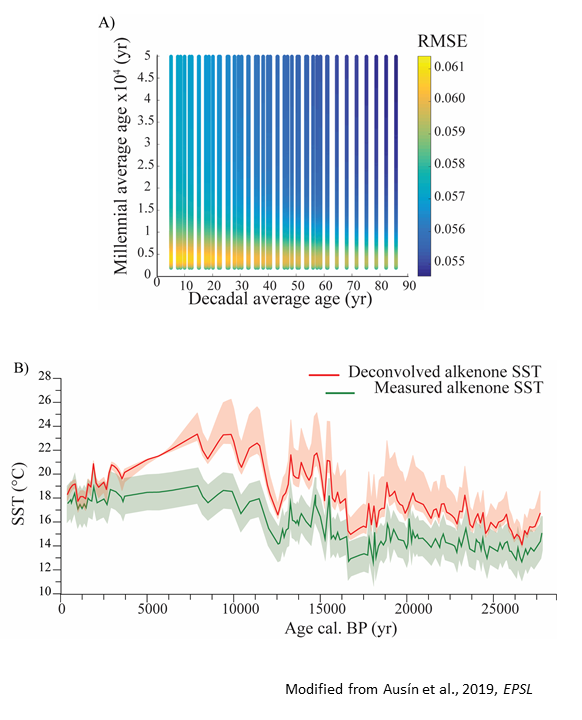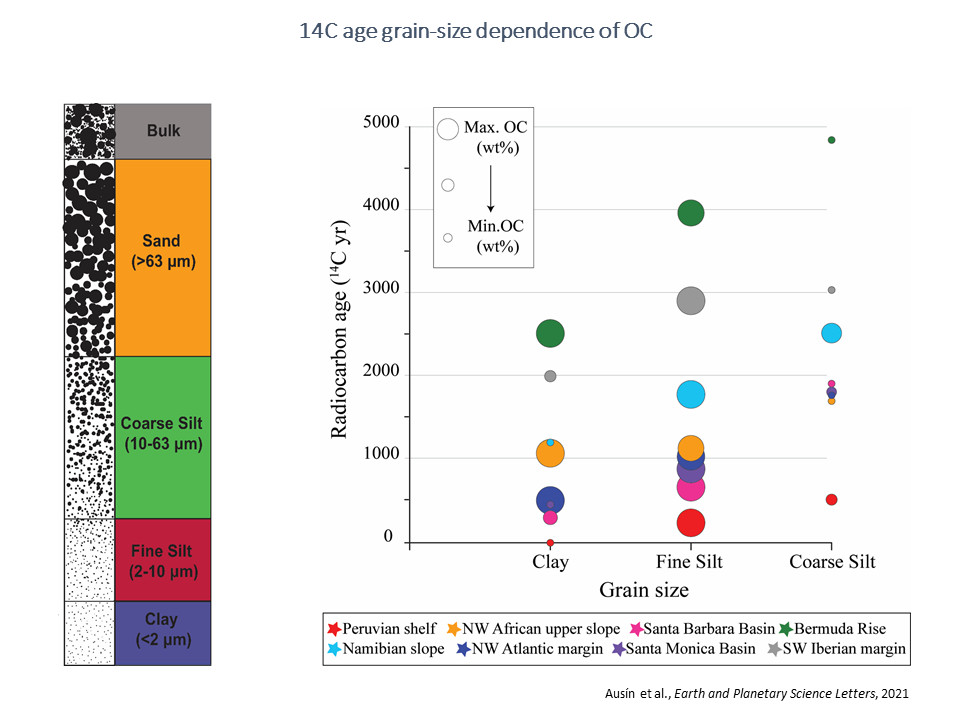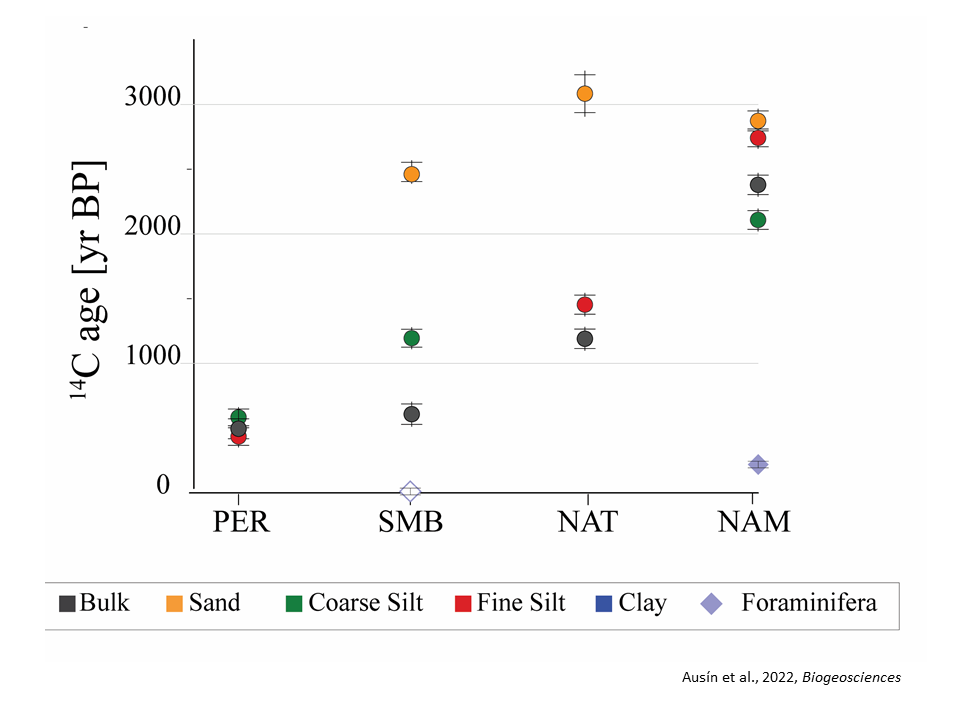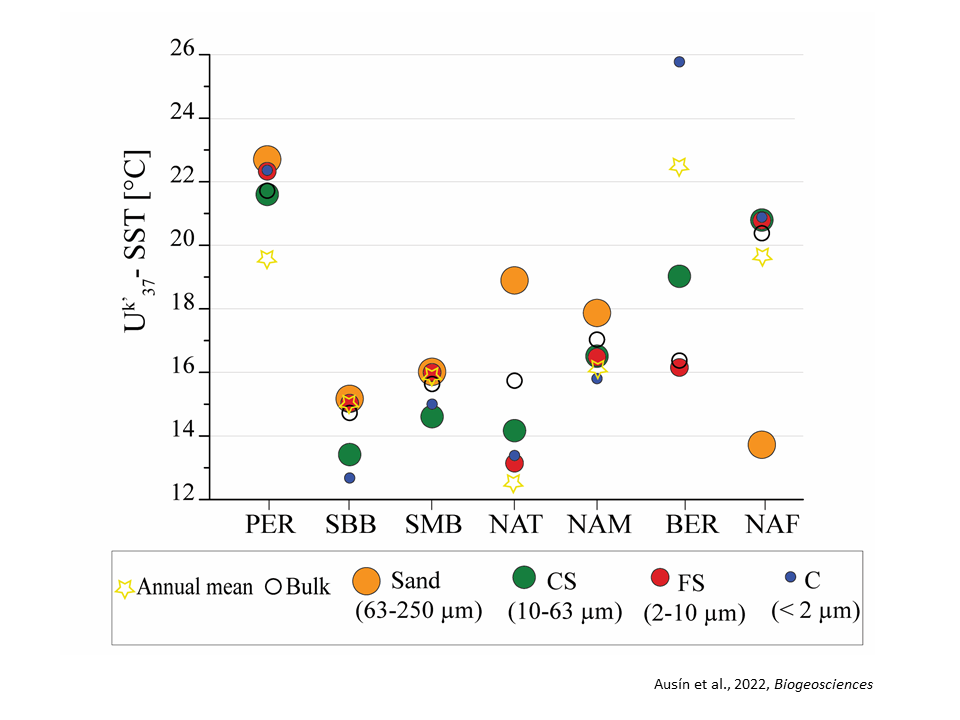A tribute to the first ocean explorers, but also to the long trip sediment particles undergo
PASSAGE is an ERC Starting Grant project
Sedimentary components encapsulate information about the time and environmental conditions in which they were formed and constitute a paramount material to reconstruct past climates. However, their secondary transport to distant locations introduces allochthonous climate signals in our records, raising questions about the robustness and fidelity of corresponding climate interpretations.
PASSAGE aims to fill in the knowledge gap on particle transport modes, to generate a new proxy to identify distorted climate signals, and to provide an accessible approach to correct them.
Scientific seeds & related projects ...

Deciphering the Paleoclimate Rosetta Stone
Lead
Establishing accurate chronostratigraphic records is essential for any paleoclimatic work, especially for those aimed at constraining rapid climate variation. The majority of paleoclimate studies for the last 40,000 years from marine sediment cores adopt a single age-depth model based on radiocarbon dating of foraminifera shells. This age-depth model is applied to all proxy records obtained from the same core, assuming that the 14C ages of the different proxy-bearing components of the sediment are co-eval, being formed and deposited synchronously. However, prior studies have shown that 14C ages of different components residing within the same sediment layer can differ by several thousand years, leading to serious aliasing between a measured proxy and the applied chronology for the core, confounding interpretations of paleoclimatic signals.
Marine sediment sequences from the so-called “Shackleton sites” (SW Iberian Margin in the NE Atlantic Ocean) allow direct correlation of marine signals with both Arctic and Antarctic ice records, and terrestrial sequences. Given the attention focused on this key region, a prerequisite must be the careful assessment of the provenance and fidelity of proxy signals.

Objectives
A marine sediment core retrieved from one of the Shackleton Sites will be extensively analyzed to provide precise age control based on 14C measurements on planktonic foraminiferal shells, bulk organic carbon, coccoliths, and alkenones.
The derived information will be used to assess the extent and nature of age offsets, and their influence on the accuracy of proxy reconstructions in the Shackleton sites.
Deriving age characteristics of these different constituents will also provide essential information on the hydrodynamic processes that affects them.
Finally, an informed interpretation and reevaluation of high‐resolution qualitative information on past surface water conditions, and on hydrodynamic variability during the last deglaciation and the Holocene will be performed.
Scientific an Social Context of the Research Project
The history of the Earth’s climate 25,000 years ago to the present day, spanning the transition from the last glacial maximum into the Holocene, and now the Anthropocene, has garnered increasing attention by the scientific community. In particular, documenting and understanding past short-term climate variability across this transition is considered essential for assessment of the nature and pace of climatic change in the future (IPCC, 2013). This project will yield unique and key insights into the fidelity of proxy records at a pivotal site for paleoceanographic and paleoclimate reconstructions that are expected to have a broad impact.
The obtained results will benefit future investigations of this key area, shedding light on the effects of age distortions between proxies on the interpretation of paleoclimatic signals.
This Project was developed at ETH Zurich by Blanca Ausín and the mentorship of Tim Eglinton at the Biogeosciences Group
Temporal Relationships among Proxy signals in marine sediments (TRAMPOLINE)
Lead
Alkenones are organic biomarkers that allow estimation of past sea surface temperature (SST) and pCO2 variations in most oceanographic settings. We know now that much of the organic matter (OM) preserved in marine sediments tends to concentrate within fine grain-size fractions. Considering that mineral particles might behave in a cohesive or sortable manner depending on their size, alkenone-mineral associations, and the governing hydrodynamic conditions may determine the transport pathways of alkenones. Consequently, we hypothesize that hydrodynamically-driven sediment sorting processes might introduce biases in autochthonous climate signals, compromising the spatial and temporal reliability of the derived proxy records.


Objectives
We aim to determine alkenone-grain size-14C age interrelationships in surface sediments retrieved from diverse strategic benchmark areas for high-temporal-resolution paleoclimate investigations where pre-existing evidence suggests temporal de-coupling of proxy records due to lateral transport. We also aim to evaluate possible asynchronous signals between alkenones, total organic carbon, coccoliths, and planktonic foraminifera. Complementary geochemical and sedimentological analyses will be performed to constrain OM distribution, provenance, and associated lateral sediment transport processes. We then plan to apply derived information and our novel measurement strategy to a marine core retrieved from the so-called Shackleton Sites in the SW Iberian Margin to assess the role of hydrodynamic processes impact on the paleotemperatures estimated from proxies residing in different grain size fractions.
Scientific an Social Context of the Research Project
Climate variability during the last deglaciation and Holocene has recently garnered increasing attention due to the growing societal concern with respect to possible consequences of sudden and unforeseen climatic change. Consequently, this most recent period in Earth’s history has been the subject of in-depth investigations in an attempt to broaden our understanding of the pace and causes of short-term climate and environmental variability. Since the discovery of alkenones in 1986, these organic biomarkers have become one of the most applied and well-established paleoclimate proxies to estimate SST and pCO2 variations. Given the importance attached to molecular fossils as proxies for the study of past climate variability, and the attention focused on the strategic regions selected for this research, a refined interpretation of the climate signals previously derived from the studied areas is essential.
This Project was developed at ETH Zurich by Blanca Ausín and the mentorship of Tim Eglinton at the Biogeosciences Group

